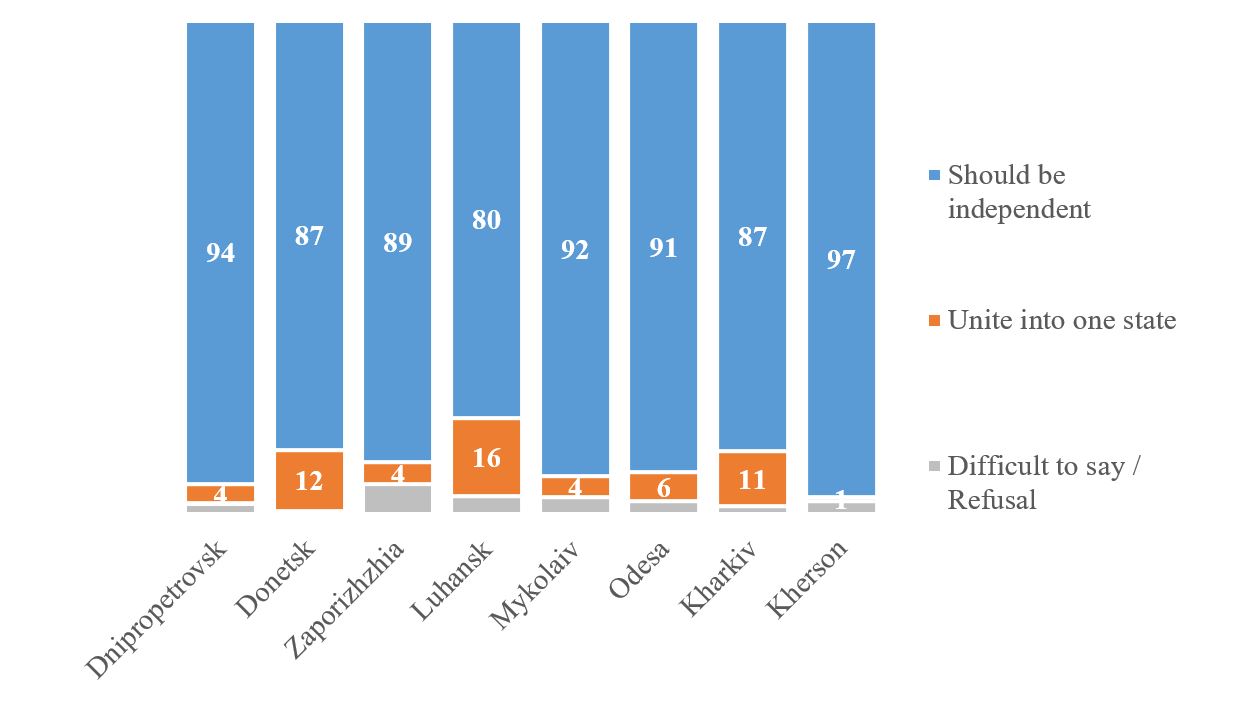
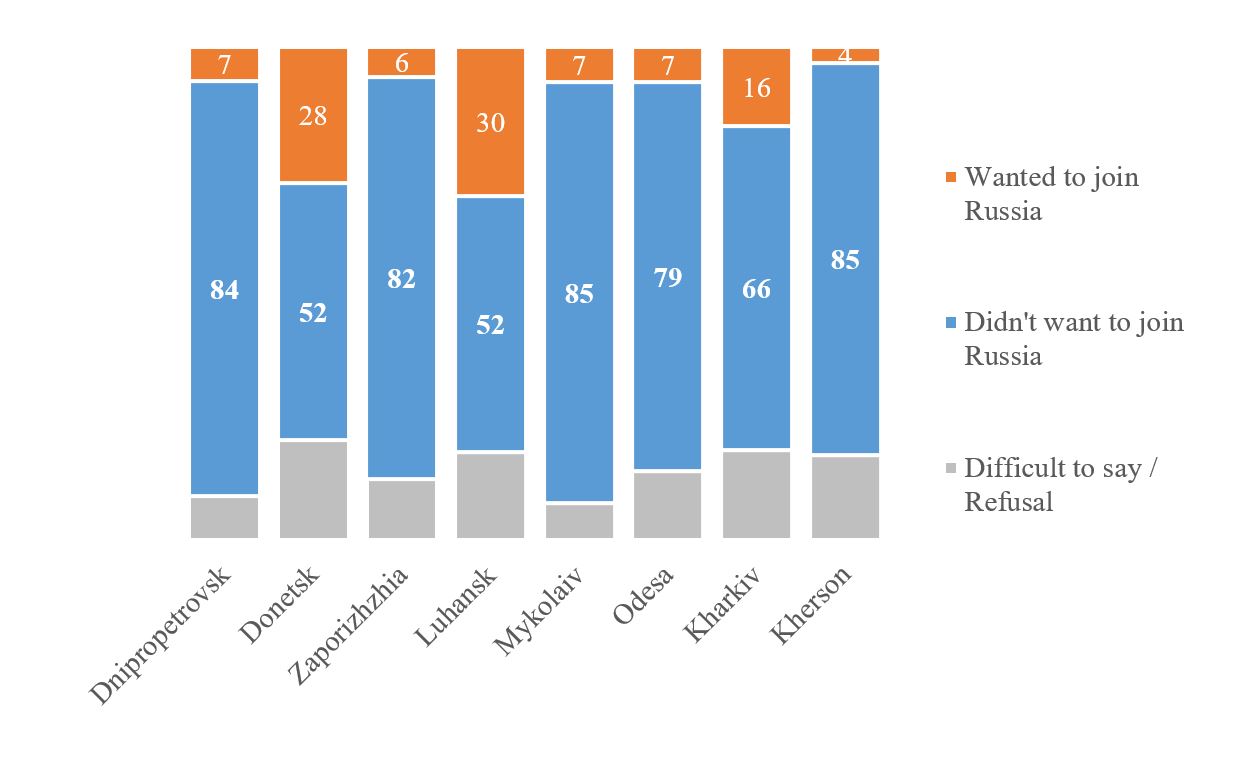
What residents of southeastern Ukraine thought about Ukraine-Russia relations prior to Russia's February 2022 invasion
Pooling together polls from February 2021, November 2021, early February 2022, KMIS shows what residents of the same southeastern oblasts (sans occupied territories of Luhansk and Donetsk) were thinking about Russia-Ukraine relations and finds that, again, an absolute majority is against joining Russia.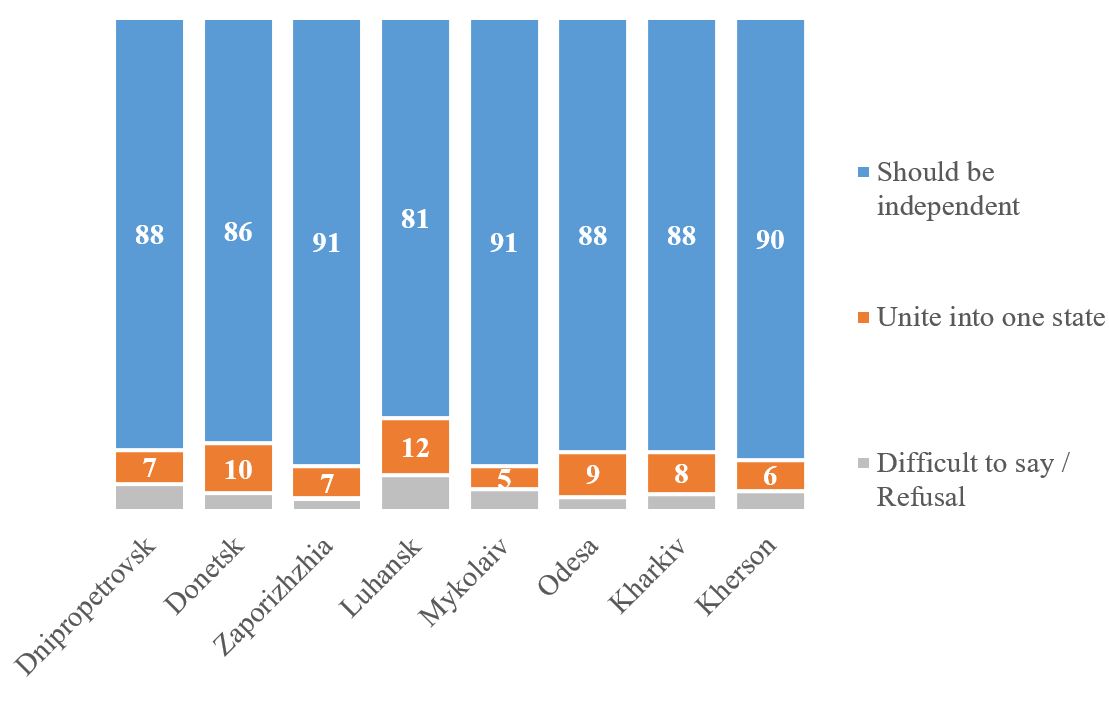
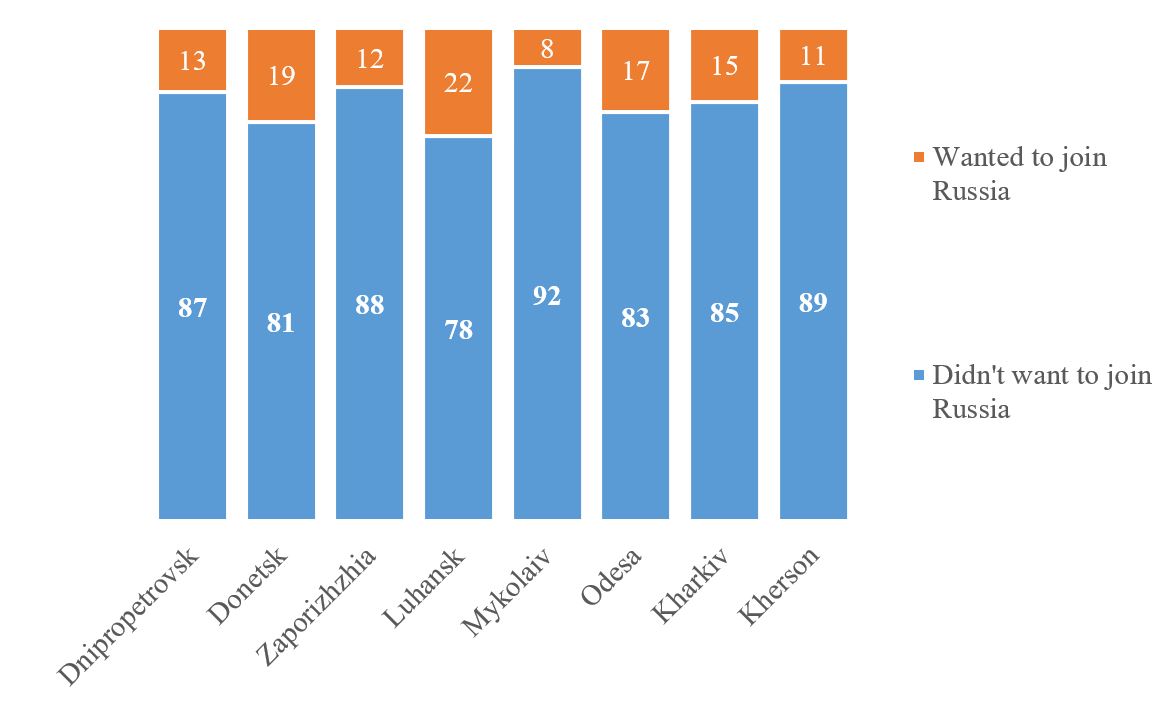
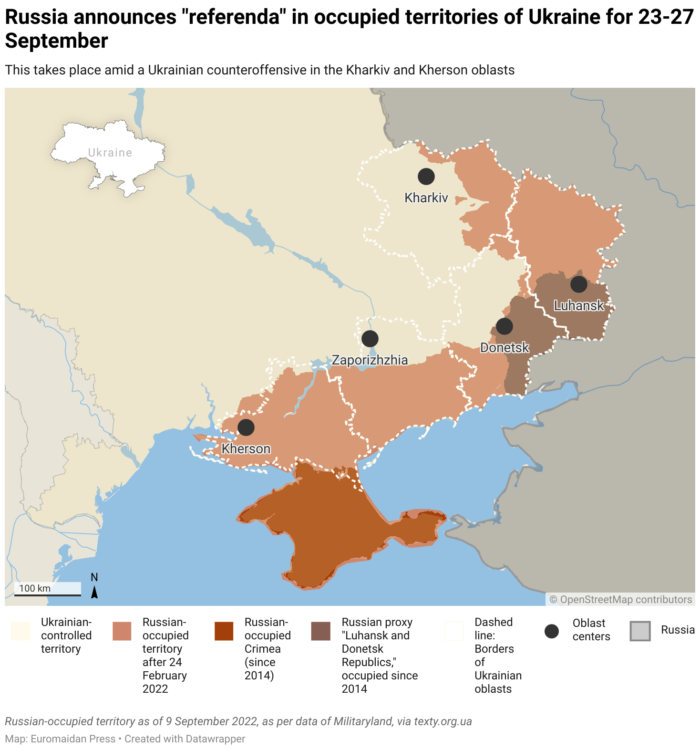
Related:
- Pseudo-referenda show on joining Russia starts in occupied Ukraine: as it happens
- Western media again fall for Kremlin myth of “Ukrainian separatism”
- Ukraine publishes video proving Kremlin directed separatism in eastern Ukraine and Crimea

